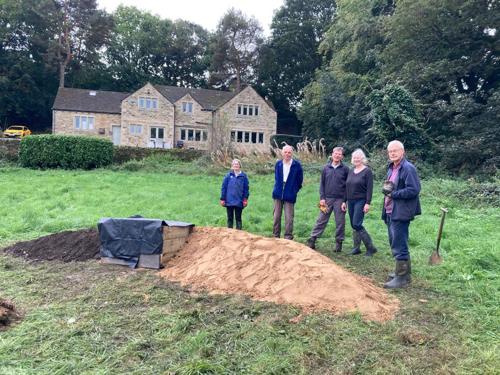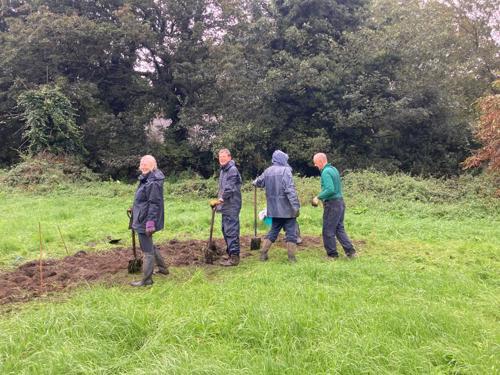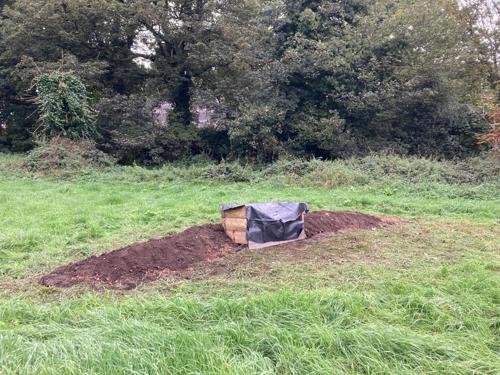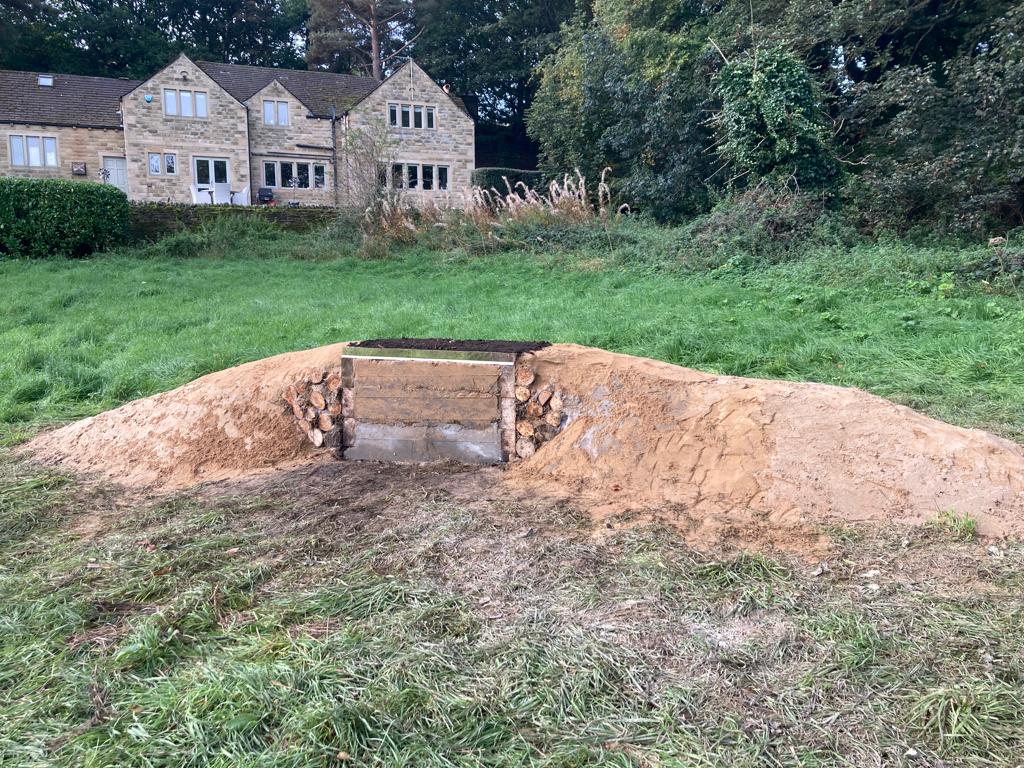Why did we construct a Bee Bank?
We are always thinking about ways in which we can improve the biodiversity of Magdale. Bees carry out a vital role in pollinating our crops, flowers and trees and it is important to create and preserve environments in which they can thrive. The Bee Bank should encourage solitary bees, of which there are nearly 250 species in the UK. They create short tunnels in which the females lay their eggs. This will hopefully help with the orchard and wildflowers. This project was funded by a grant from Natural Kirklees.

How did we decide on the Design?
Firstly we formed a small group of volunteers to consider the design and then construct the Bee Bank. We found that bee banks had been constructed at Rawcliffe Meadows near York and at RSPB Pagnum Harbour in Sussex. One of the group members contacted them for advice, particularly on the do’s and don’t’s and what they had learnt. Other volunteers explored social media advice and undertook other research on the internet.
Following this work we came up with a design of the Bee Bank of a size that we thought was appropriate for the location and manageable for us to construct.

How did we construct the Bee Bank?
We went through the following steps:
- We started by mapping out the area, digging up the turf which we then placed back upturned.
- We constructed the wooden frame (4ft x 2ft) for a ‘cliff face’ from new railway sleepers and placed this in the centre of the arc shape we had created on the ground.
- We gradually built up the ‘cliff face’ over several days with mixtures of sand and cement plus some layers of straw.
- On either side of the wooden frame we transferred soil from a nearby location to build up the banking.
- Immediately next to the frame we placed some logs which had holes drilled into them
- Then we topped off the banking with builders sand to a depth of about 9 inches. We made this compact by flattening it down using the back of spades.
- We placed a frame on top of the wooden structure, placed a waterproof membrane in it and then filled with soil, followed by the planting of a variety of sedum plants.
- We will plant other bee loving plants plants around the Bee Bank.

